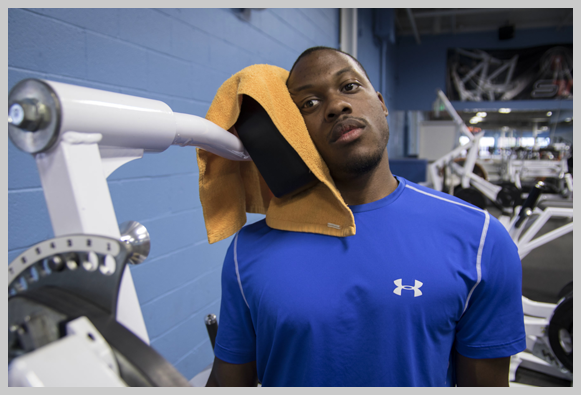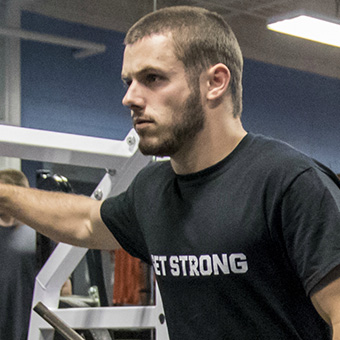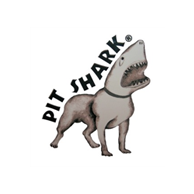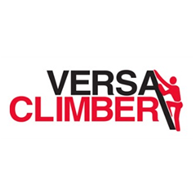Rogers Athletic has created an incredible piece of equipment to strength train the head, neck, and upper back. The 5-Way Neck is used in many of the SMARTER Team Training programs. With exercises that emphasize this area of the body, our clients and athletes are healthier and stronger throughout their entire body.
This area of the body is primarily addressed with collegiate and professional athletes, but there are benefits for everyone that trains their head, neck, and upper back. Poor posture being an example that may lead to headaches, hamstring and low back issues, and potentially knee and ankle injuries. Not to mention numerous potential performance benefits too. Training on the 5-Way Neck from Rogers Athletic is time efficient, productive, and effective.

The Rogers Athletic 5-Way Neck is manufactured by Rogers AthleticDiscover other training equipment on their profile page.
Find out more about our other equipment
RESEARCH
1 – Sports Health. 2017 Mar/Apr;9(2):168-173. Epub 2016 Nov 15. Sex Differences in Anthropometrics and Heading Kinematics Among Division I Soccer Athletes. Bretzin, Mansell, Tierney, McDevitt.
2 – Sports Med. 2016 Feb 9. [Epub ahead of print] Neck Muscular Strength, Training, Performance and Sport Injury Risk: A Review. Hrysomallis.
3 – Am J Sports Med. 2014 Mar;42(3):566-76. Epub 2014 Jan 31. Effect of neck muscle strength and anticipatory cervical muscle activation on the kinematic response of the head to impulsive loads. Eckner JT1, Oh YK, Joshi MS, Richardson JK, Ashton-Miller JA.
4 – Sports Med. 2016 May 3. [Epub ahead of print] Minimizing Head Acceleration in Soccer: A Review of the Literature. Caccese, Kaminski.
5 – Am J Sports Med. 1979 Jul-Aug;7(4):231-3.Neck motion in the high school football player. Observations and suggestions for diminishing stresses on the neck. Pearl AJ, Mayer PW.
6 – J Prim Prev. 2014 Neck strength: a protective factor reducing risk for concussion in high school sports. Collins CL, Fletcher EN, Fields SK, Kluchurosky L, Rohrkemper MK, Comstock RD, Cantu RC.
7 – Pediatr Exerc Sci. 2014 Feb;26(1):33-40. Epub 2013 Oct 2.The relationship between impact force, neck strength, and neurocognitive performance in soccer heading in adolescent females. Gutierrez GM1, Conte C, Lightbourne K.
8 – Sports Health. 2013 Jul;5(4):320-6. Neck strength imbalance correlates with increased head acceleration in soccer heading
9 – Laryngorhinootologie. 2015 Jul 17. [Epub ahead of print] [Electromyographic Analysis of Neck Muscles at a Simulated Rear-end Impact in Healthy Subjects]. [Article in German] Raven , Volk GF, Stadler J, Graßme, Anders , Guntinas-Lichius.
10 – Med Sci Sports Exerc. 2015 Jun 8. [Epub ahead of print] Acute Lower Extremity Injury Rates Increase following Concussion in College Athletes. Lynall RC, Mauntel TC, Padua DA, Mihalik JP.
11 – Cortical hypoexcitability persists beyond the symptomatic phase of a concussion. Powers KC, Cinelli ME, Kalmar JM
12 – Am J Sports Med. 2016 Mar;44(3):742-7. Epub 2016 Jan 19. Concussion Increases Odds of Sustaining a Lower Extremity Musculoskeletal Injury After Return to Play Among Collegiate Athletes.
13 – Sean Gregory, Neck Strength Predicts Concussion Risk, Study Says Time Sports 02.21.2013.
14 – Robert Nash, Angus Barnett, Sally Burrows, Warren Andrews, Brendyn Appleby, Can a specific neck strengthening routine reduce cervical spine injuries in a Men’s Professional Rugby union team? A retrospective analysis Journal of Sports Medicine 2013 12,542-550
15 – Paul Steinbach Sports Injury Expert Dawn Comstock Talks Concussion Prevention Athletic Business; Apr 2013, Vol. 37 Issue 4, p11
16 – Beeman SM, Kemper AR, Madigan ML, Duma SM Effects of bracing on human kinematics in low-speed frontal sled tests. Ann Biomed Eng. 2011 Dec;39(12):2998-3010
17 – Bose D, Crandall JR., Influence of active muscle contribution on the injury response of restrained car occupants. Ann Adv Automot Med. 2008 Oct; 52:61-72.
18 – Vaccaro AR, Klein GR, Ciccoti M, Pfaff WL, Moulton MJ, Hilibrand AJ Watkins Return to play criteria for the athlete with cervical spine injuries resulting in stinger and transient quadriplegia/paresis.Spine J. 2002 Sep-Oct;2(5):351-6.
19 – Anita N. Vasavada, Barry W. Peterson, Scott L. Delp, Three-dimensional spatial tuning of neck muscle activation in humans Exp Brain Res (2002) 147:437–448.
20 – Thomas J. Roberts and Emanuel Azizi The series-elastic shock absorber: tendons attenuate muscle power during eccentric actions, Journal of Applied Physiology August 1, 2010 vol. 109 no. 2 396-404.
21 – Armstrong B, McNair P, Taylor D., Head and neck position sense. Sports Med. 2008; 38(2):101-17.
22 – J Sports Med Phys Fitness. 2017 Apr 13. Neck strength and self-reported neck dysfunction: what is the impact of a season of rugby union? Salmon, Sullivan, Handcock, Rehrer, Niven.
23 – J Strength Cond Res. 2017 Mar 13. Can Neck Strength be Measured Using a Single Maximal Contraction in a Simulated Contact Position? Salmon, Handcock, John Sullivan, Reherer, Niven.
Coach Taylor’s go to exercise…
“One of the first exercises we teach our athletes is the shrug. The one arm and two arm options on the 5-Way Neck makes coaching the protocols we use on this piece time efficient and effective. Super-setting these exercises with programming on the 3-Way Row gives us the capability to provide a comprehensive head, neck, and upper back program. Being able to progressively overload these crucial muscles of the body on the pieces from Rogers Athletic give us a huge competitive advantage.” – Rob Taylor, Jr., Founder and Owner of SMARTER Team Training

Alex keeps it creative with…
“When athletes have trained with us for a while and begin to develop significant neck strength, I put them through an ascending triples program. This consists of a starting weight of about 50% of the athlete’s 1RM for 3 reps. Add 10 lbs. and complete 3 more reps. Continue this until the athlete executes their last repetition with proper form.” – Alex Walsh, Performance Coach

Coach Parkes focuses on…
“I like to focus on the eccentric contraction during the neck flexion and neck extension exercises on the 5-Way Neck machine. Choose a set weight and perform the concentric action for 2-3 seconds in a controlled manner. The eccentric action should be performed anywhere from 6-8 seconds. Once the client falls under a 6 second eccentric action the set is over. The goal should be 8-10 repetitions.” – Ade Parkes, Performance Coach
UPCOMING EVENTS
SIGN UP FOR THE STT NEWSLETTER
STT SPONSORS
GIVE US A CALL AT (410) 929-0788
OR SEND US A MESSAGE BY FILLING OUT THE FORM BELOW
 (410) 929-0788
(410) 929-0788
































